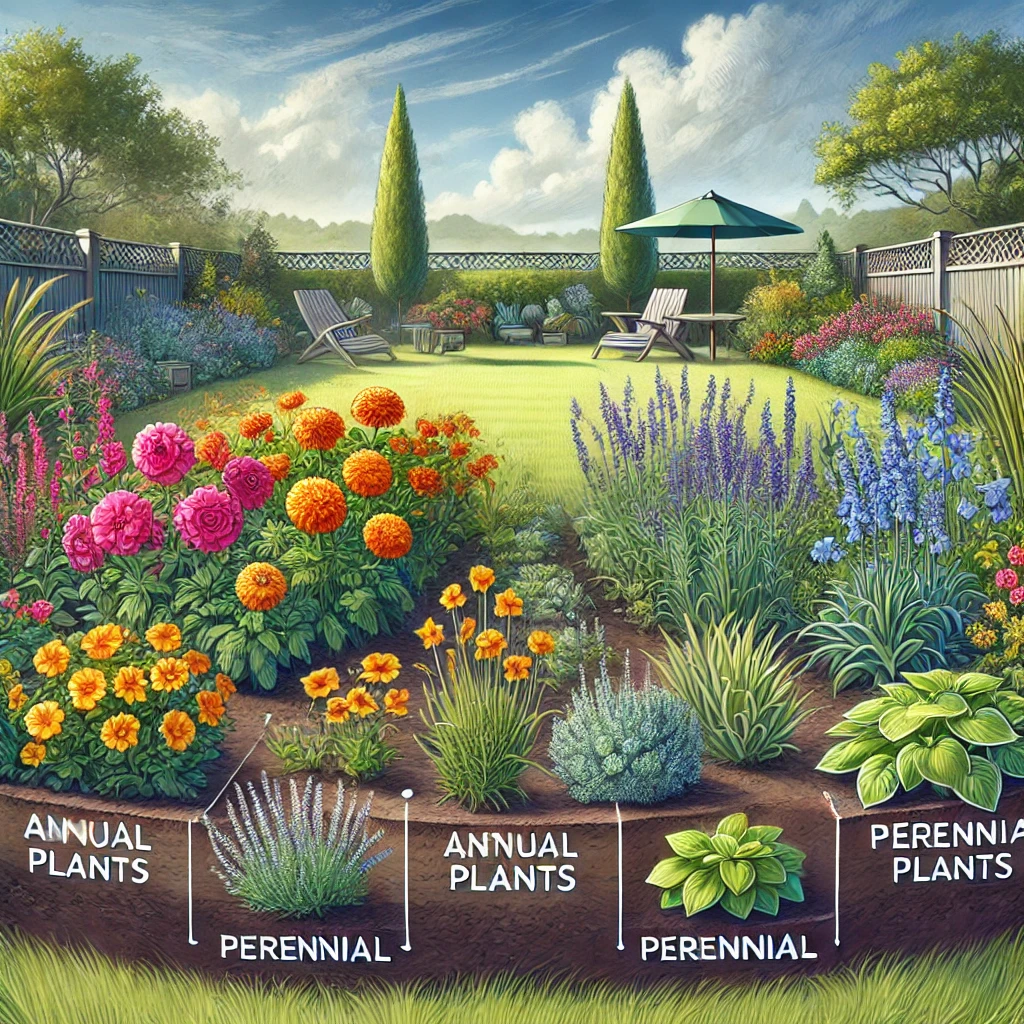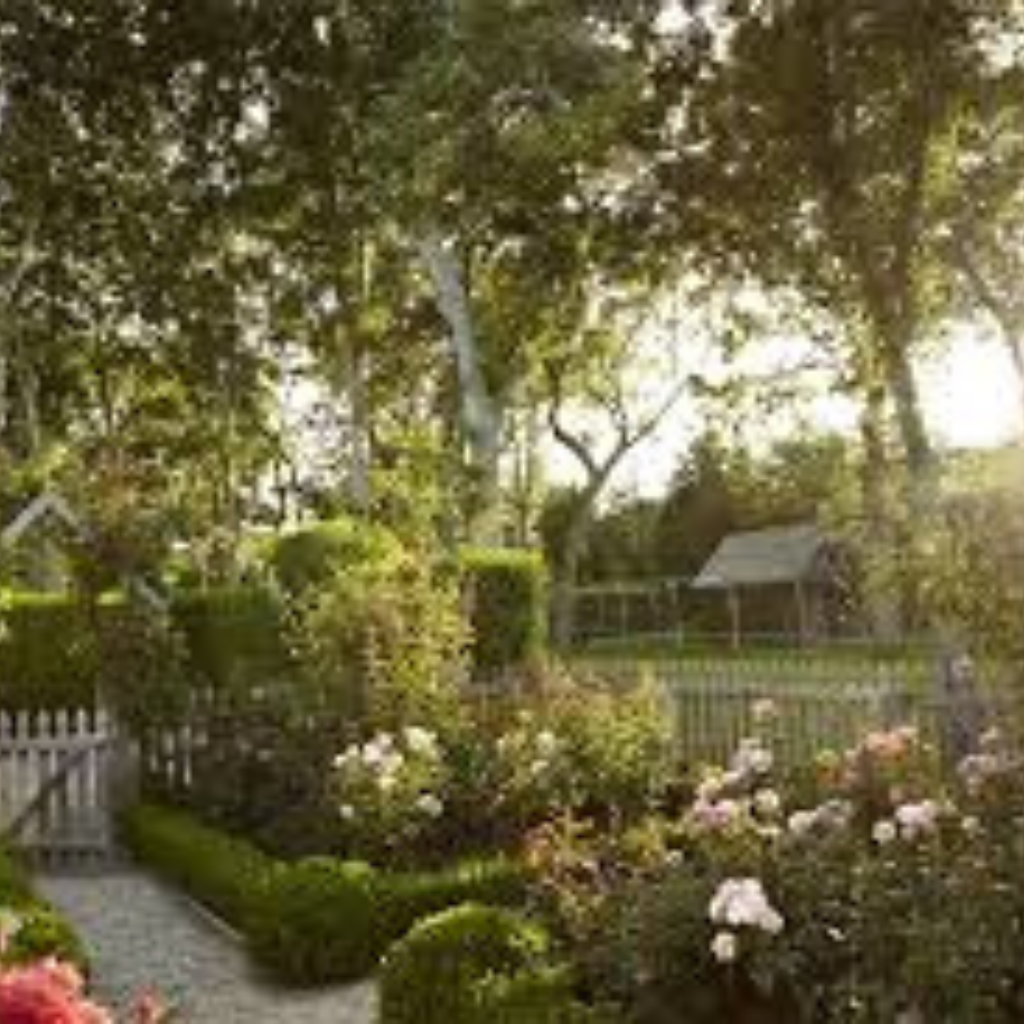
Creating a thriving and visually appealing garden often begins with one fundamental choice: selecting the right plants. Among the most common options are annual and perennial plants, each bringing unique characteristics and advantages to the garden. Understanding these differences is key to planning and maintaining a garden that aligns with your goals, environment, and available resources.
Annual plants complete their life cycle from germination to flowering and seed production within a single growing season. These plants are known for their vibrant colors and rapid growth, making them a popular choice for gardeners seeking an immediate visual impact. On the other hand, perennial plants persist for multiple years, growing back from their root systems each season. They often take longer to establish but reward gardeners with recurring beauty and lower long-term maintenance.
Knowing when and how to use annuals or perennials isn’t just about aesthetics. It influences how much time, effort, and money you’ll need to invest in your garden. For instance, annuals might be perfect for creating a dramatic seasonal display, while perennials provide a stable foundation and continuity in the garden’s design.
The purpose of this article is to guide gardeners through the benefits and limitations of each type of plant. By the end, you’ll have a clear understanding of how to choose between annuals and perennials or even combine them effectively to create a garden that thrives, whether you’re cultivating a cozy backyard space, a sprawling flowerbed, or a container garden on your patio.
What Are Annual Plants?
Annual plants are a class of flora that complete their entire life cycle within a single growing season. This means they sprout from seeds, grow, flower, produce seeds, and ultimately die all within the span of a few months. Unlike perennials, annuals do not return year after year; they need to be replanted each growing season.
Characteristics of Annual Plants
- Short Life Span: From germination to the end of their lifecycle, annuals live for just one season.
- Rapid Growth: These plants grow quickly to maximize their bloom time during their short life span.
- Vibrant Flowers and Foliage: Annuals are often prized for their colorful and abundant blooms, which can last the entire growing season with proper care.
Growth Cycle
The lifecycle of annual plants follows a straightforward sequence:
- Germination: Seeds are planted, and sprouts emerge.
- Growth: The plant rapidly grows foliage and stems.
- Flowering: The plant focuses its energy on producing flowers, often continuously throughout the season.
- Seed Production: After flowering, the plant creates seeds to ensure its genetic line continues.
- End of Lifecycle: Once seeds are produced, the plant dies, completing its one-season existence.
Examples of Popular Annual Plants
Annuals come in a variety of species suited to different climates and garden styles. Some popular examples include:
- Marigolds: Known for their bright yellow and orange flowers, marigolds are a favorite for their pest-repelling properties.
- Petunias: Available in a spectrum of colors, petunias are ideal for containers and hanging baskets.
- Zinnias: With vibrant, long-lasting blooms, zinnias thrive in sunny flower beds.
- Impatiens: Perfect for shady areas, impatiens add splashes of color where sunlight is limited.
Pros of Using Annual Plants
- Instant Gratification: Annuals bloom quickly, providing immediate color and vibrancy.
- Seasonal Flexibility: You can change your garden’s look every year by experimenting with new colors, shapes, and plant combinations.
- Continuous Blooms: Many annuals flower throughout the entire growing season, offering prolonged visual appeal.
Cons of Using Annual Plants
- Higher Costs Over Time: Since they need to be replanted annually, the cost of seeds or seedlings can add up year after year.
- More Maintenance: Annuals often require more frequent watering, fertilizing, and deadheading to keep them looking their best.
- Limited Lifespan: Their one-season life cycle means they don’t provide long-term structure to a garden.
Annual plants are an excellent choice for gardeners looking to inject bursts of color and variety into their spaces. While they require more frequent investment and care, their vibrant blooms and rapid growth make them a rewarding option for creating eye-catching seasonal displays.
What Are Perennial Plants?
Perennial plants are those that live for more than two years, providing a reliable presence in the garden across multiple growing seasons. Unlike annuals, which complete their lifecycle within a single season, perennials return year after year, often becoming more robust with time. While their blooms may be shorter-lived compared to annuals, their ability to endure through seasons makes them a cornerstone of many gardens.
Characteristics of Perennial Plants
- Long Lifespan: Perennials can live for several years, some even decades, with proper care.
- Dormancy Period: During colder months, perennials typically die back to their roots but regrow when conditions improve.
- Slow Initial Growth: Perennials often take longer to establish, focusing on root and structure development in their early years.
- Varied Bloom Cycles: While many perennials bloom for a short period, some varieties provide flowers for several months.
Growth Cycle
The lifecycle of perennial plants involves:
- Planting and Establishment: Perennials may take a season or two to fully establish their roots.
- Growth and Blooming: During the growing season, they sprout, grow foliage, and bloom.
- Seed Production: Many perennials produce seeds, though some spread through underground rhizomes or bulbs.
- Dormancy: As temperatures drop, the plant’s above-ground growth dies back while its root system remains alive and dormant, ready to regrow the next season.
Examples of Popular Perennial Plants
Perennials come in a wide range of shapes, sizes, and functions, making them versatile for any garden. Some popular choices include:
- Lavender: Known for its fragrant purple blooms and ability to attract pollinators.
- Hostas: Shade-loving plants with lush, decorative foliage.
- Black-Eyed Susans: Cheerful yellow flowers that thrive in sunny gardens.
- Peonies: Known for their stunning, large blooms that return each spring.
- Daylilies: Resilient plants with vibrant, trumpet-shaped flowers.
Pros of Using Perennial Plants
- Cost-Effective Over Time: While the initial investment may be higher, perennials don’t need to be replanted annually, reducing long-term costs.
- Low Maintenance: Once established, many perennials require minimal care, making them ideal for low-maintenance gardens.
- Long-Term Structure: Perennials provide a stable foundation, adding depth and continuity to garden designs.
- Environmental Benefits: Their long-lasting root systems help improve soil health and provide habitats for beneficial insects and pollinators.
Cons of Using Perennial Plants
- Delayed Gratification: Perennials often take longer to establish and bloom compared to annuals.
- Limited Seasonal Impact: Many perennials have a shorter blooming period, requiring careful planning for year-round interest.
- Susceptibility to Climate: Some perennials may struggle in extreme weather conditions or outside their preferred hardiness zones.
- Potential Overgrowth: Without proper care, certain perennials can spread aggressively and dominate garden spaces.
perennial plants offer stability, longevity, and a sense of permanence to a garden. While they may require patience during their establishment phase, their enduring presence and environmental benefits make them an invaluable choice for gardeners looking to create a sustainable and harmonious outdoor space.

Factors to Consider When Choosing Between Annuals and Perennials
Selecting between annuals and perennials involves more than personal preference; it requires thoughtful consideration of various factors, such as your local climate, garden design goals, maintenance capacity, and budget. Each of these elements plays a crucial role in determining which plants will thrive and complement your gardening vision.
Climate and Hardiness Zones
The climate and hardiness zone of your location are among the most critical factors in plant selection.
- Annuals: These plants are well-suited to regions with distinct growing seasons. Since they complete their life cycle in one season, they are a good choice for climates with short summers or unpredictable weather. However, they often require protection from frost and extreme temperatures.
- Perennials: Hardiness is a defining characteristic of perennials, with many varieties specifically adapted to withstand the seasonal temperature fluctuations of their designated hardiness zones. Before choosing perennials, check the plant’s hardiness rating to ensure it aligns with your local conditions.
Garden Design Goals
The purpose and aesthetics of your garden heavily influence whether annuals, perennials, or a combination of both is the best fit.
- Annuals: If your goal is to create a vibrant display of color and blooms throughout the growing season, annuals are ideal. They allow you to experiment with different palettes and layouts each year, making them perfect for gardeners who enjoy variety and creativity.
- Perennials: For long-term structure and continuity, perennials are the way to go. They provide a stable backdrop and can serve as anchor points in your garden design. Their seasonal bloom patterns also offer a sense of rhythm and anticipation as they return each year.
Maintenance Levels
The time and effort you’re willing to dedicate to your garden will significantly affect your plant choices.
- Annuals: These plants often require more hands-on care, including regular watering, fertilizing, and deadheading, to keep them blooming all season. However, their rapid growth and continuous blooms make the effort worthwhile for many gardeners.
- Perennials: Once established, perennials tend to be low-maintenance. They don’t need replanting each year and generally require less frequent watering and fertilization. However, some perennials may need periodic dividing or pruning to prevent overgrowth and maintain their health.
Budget Considerations
The financial aspect of gardening can’t be overlooked, as costs can vary greatly between annuals and perennials.
- Annuals: While individual annual plants or seed packets are relatively inexpensive, the need to replant them each year can add up over time, especially for large gardens.
- Perennials: These plants typically have a higher upfront cost but are a more economical choice in the long run since they regrow every year. Additionally, mature perennials can often be divided and replanted elsewhere in your garden, further reducing costs.
By weighing these factors, you can make informed decisions about when to use annuals, perennials, or a combination of both to achieve a balanced and thriving garden. For instance, annuals might be perfect for adding bursts of seasonal color to a patio or flowerbed, while perennials can provide enduring structure and reduce long-term maintenance in larger landscape designs. The key lies in aligning your plant choices with your climate, goals, and resources for a garden that’s as practical as it is beautiful.
When to Use Annual Plants
Annual plants shine in situations where vibrant, seasonal impact and flexibility are paramount. Their fast growth and abundant blooms make them an excellent choice for gardeners looking to add immediate color and personality to their outdoor spaces.
Ideal Situations for Planting Annuals
- Adding Quick Bursts of Color: Annuals are perfect for creating a striking visual impact in a short amount of time. Whether you’re refreshing your garden or preparing for a special occasion, their bright flowers and lush foliage can transform a space almost instantly.
- Filling Gaps in Perennial Beds: As perennials often have limited blooming periods, annuals can be used to fill in the gaps, maintaining consistent color and visual interest throughout the growing season.
- Seasonal or Themed Gardens: Annuals are an excellent option for gardens designed around seasonal events or specific themes. For example, warm-hued marigolds and zinnias can complement an autumnal display, while pastel petunias create a serene spring vibe.
Examples of Gardens Suited to Annuals
- Flower Boxes and Window Planters: Annuals like petunias, geraniums, and begonias thrive in compact spaces, adding pops of color to window sills or balconies.
- Container Gardens: Ideal for patios, decks, or porches, container gardens benefit from annuals that bring dynamic hues and textures.
- Edging and Borders: Annuals can define pathways or create a neat border around beds, giving gardens a polished appearance.
- Seasonal Displays: Use annuals to refresh garden beds each year, experimenting with different designs and palettes.
Annual plants are ideal for gardeners seeking flexibility, experimentation, and seasonal vibrancy, making them a versatile choice for a variety of garden styles.
When to Use Perennial Plants
Perennials excel in scenarios where stability, longevity, and ecological benefits are desired. Their ability to establish deep roots and return year after year makes them indispensable for gardeners aiming to create sustainable and enduring landscapes.
Ideal Situations for Planting Perennials
- Establishing Long-Term Garden Structure: Perennials act as the backbone of garden design, offering consistency and form. Shrubs, ornamental grasses, and flowering perennials like peonies or coneflowers create a sense of permanence and cohesion.
- Creating Low-Maintenance Landscapes: Once established, many perennials require minimal upkeep. Their durability and adaptability reduce the need for frequent watering, fertilizing, or replanting, making them ideal for gardeners with limited time.
- Supporting Pollinators with Consistent Blooms: Perennials provide a reliable source of nectar and pollen for bees, butterflies, and other beneficial insects. A thoughtfully selected mix of perennials can offer blooms across multiple seasons, supporting biodiversity in your garden.
Examples of Gardens Suited to Perennials
- Herbaceous Borders: A classic garden style that combines flowering perennials like daylilies and irises with foliage plants for a layered, year-round display.
- Cottage Gardens: Characterized by a mix of perennials such as lavender, delphiniums, and hollyhocks, these gardens evoke a timeless and romantic feel.
- Wildlife Gardens: Perennials like echinacea and milkweed attract pollinators, making them perfect for gardeners prioritizing environmental health.
- Foundation Plantings: Perennials like hostas and ferns work well around buildings or larger landscape features, softening hard edges and adding texture.
By integrating perennials into your garden, you create a lasting foundation that provides structure, sustainability, and seasonal beauty. Their enduring nature makes them a practical choice for gardeners who value both aesthetics and efficiency.
Combining Annuals and Perennials for a Balanced Garden
Blending annuals and perennials in your garden is a strategic approach that combines the best of both worlds. It allows you to enjoy the enduring structure and reliability of perennials while adding the dynamic seasonal vibrancy of annuals. A well-balanced mix of the two types creates a garden that feels alive, ever-changing, and visually harmonious throughout the year.
Benefits of Blending Annuals and Perennials
- Extended Seasonal Interest: While perennials anchor the garden with consistent structure and blooms at specific times, annuals fill in the gaps with continuous color, ensuring there’s always something in bloom.
- Flexibility and Creativity: Annuals offer the chance to experiment with new colors, textures, and arrangements each year without altering the garden’s foundational design provided by perennials.
- Efficient Use of Space: Perennials often have periods of dormancy or less visually appealing growth stages. Annuals can be used to cover these areas, maximizing the garden’s appeal throughout the growing season.
- Enhanced Biodiversity: Combining the two plant types attracts a wider range of pollinators, as different plants bloom at various times, providing a steady supply of nectar and pollen.
Tips for Achieving a Cohesive Look
- Create Layers: Use perennials to establish a base layer of height, structure, and longevity, and plant annuals in the foreground for seasonal pops of color.
- Coordinate Colors: Choose annuals and perennials with complementary or harmonious color palettes to avoid visual chaos. For example, pair pastel annuals like petunias with soft-colored perennials like lavender for a calming effect.
- Match Growth Habits: Combine plants with similar light, soil, and water requirements to ensure compatibility and reduce maintenance efforts.
- Group Strategically: Plant annuals in clusters around perennials to draw attention to focal points or fill in sparse areas, creating a lush, full appearance.
Examples of Plant Pairings for Complementary Aesthetics
- Sun-Loving Gardens: Pair vibrant marigolds (annuals) with foundational black-eyed Susans (perennials) for a cheerful, sunny display.
- Shade Gardens: Combine shade-tolerant impatiens (annuals) with hostas or ferns (perennials) for a soft, tranquil effect.
- Cottage Gardens: Blend zinnias (annuals) with timeless perennials like hollyhocks and delphiniums for a classic, romantic look.
- Pollinator-Friendly Beds: Pair nectar-rich annuals like cosmos with perennials such as coneflowers and milkweed to attract and sustain bees and butterflies.
By thoughtfully integrating annuals and perennials, you can create a garden that evolves beautifully over time while remaining vibrant and engaging. The key is to let each plant type play to its strengths: use perennials for stability and structure and annuals for color and creativity. Together, they form a dynamic and resilient garden that thrives through the seasons.
Read more: How to Care for Christmas Cactus
Conclusion
Understanding the differences between annual and perennial plants is essential for making informed decisions about your garden. Each type offers unique advantages, with annuals providing quick bursts of color and seasonal flexibility, while perennials offer long-lasting structure and low-maintenance beauty. By considering factors such as your climate, garden goals, maintenance preferences, and budget, you can determine when to use each plant type to create a garden that suits your needs.
Combining annuals and perennials can also offer the best of both worlds, giving your garden the dynamic appeal of annuals with the stability and enduring beauty of perennials. Whether you’re looking to add seasonal flair or create a lasting landscape, the right mix can elevate your garden’s design and ensure it thrives throughout the year. With careful planning and thoughtful pairings, you can create a harmonious, beautiful garden that provides color, texture, and interest in every season.
